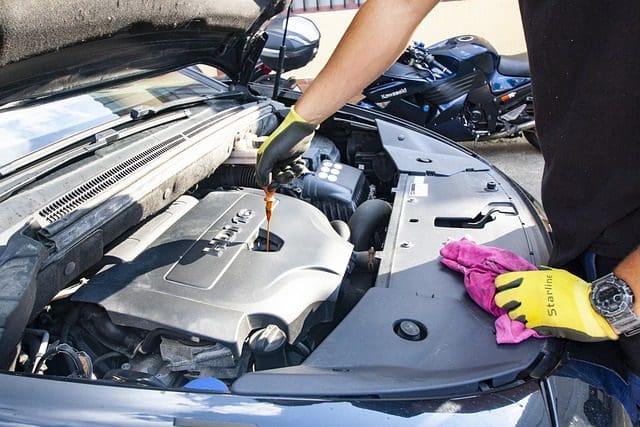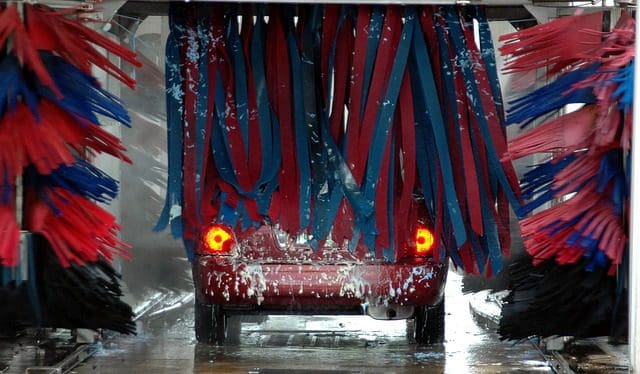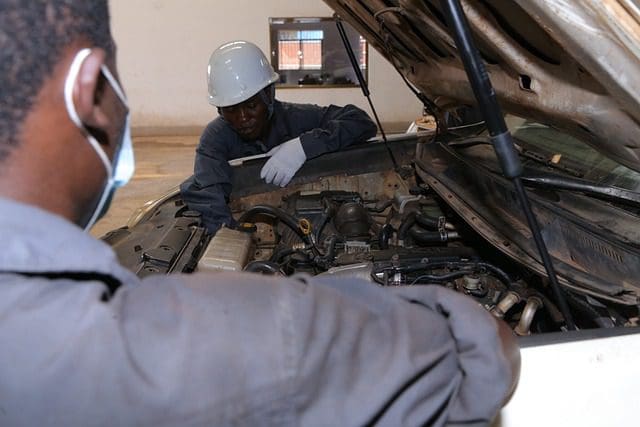According to a recent study, more than 90% of vehicle owners admit to putting off car maintenance longer than they should regularly. These people end up spending an extra $1,200 on car maintenance over the life of their vehicles because of it.
Are you taking the time to maintain your car in the way you should? If so, you should continue doing what you’re doing. Having routine car service performed will pay off in the end.
But if you’re not maintaining your car properly, you should aim to change that. You’ll need to do more than just an annual service on your car to avoid scheduling major car repair services.
We’ve created a car maintenance guide for beginners that should help. Take a look at the tips on maintaining your car below and put them to good use.
Read Through Your Owner’s Manual
In recent years, surveys have shown that less than one-third of vehicle owners ever read the owner’s manuals for their cars. This is largely because reading the average owner’s manual takes about six hours.
You’ll probably never read every word in the owner’s manual for your car. But you should try to read through the sections that deal with car maintenance.
Doing this lets you understand which car maintenance steps you should take over time. It’ll decrease the chances of you forgetting to take an important step along the way.
Reading the owner’s manual for your car is also a fantastic way to learn about its many features. You might discover features that you wouldn’t find otherwise.
Keep an Eye on Your Tire Pressure
To the naked eye, your car’s tire pressure might look fine. But just because you aren’t riding around on flat tires doesn’t mean your tires have enough air.
You should be able to find out how much air should be in your car’s tires by looking at the side of them. You can then utilize a tire pressure gauge to see whether or not they have enough air.
If your tires are underinflated, it could increase the chances of you experiencing a blowout. It could also affect everything from your tires’ longevity to your vehicle’s fuel economy.
It’ll take you less than ten minutes to add air to your four tires to ensure they’re inflated enough. It’s worth spending the time to do it when you consider all the bad things that might happen if you don’t.
Change Your Oil

As a general rule of thumb, people used to be told to change the oil in their cars at least once every 3,000 miles. But you shouldn’t have to do it this often anymore as long as you have a relatively newer car.
Nowadays, you can get away with going 5,000 and sometimes even 10,000 miles between oil changes. It all depends on your car’s age and what kind of oil you use.
Whatever the case, you shouldn’t use this as an excuse to put off oil changes for months. You should consult the owner’s manual for your car and change your oil as often as it says to. You should also replace your oil filter each time you change your oil.
Using fresh oil in your car will be of the utmost importance since it will lubricate all the parts of your engine. Oil changes are, therefore, one of the most essential car maintenance steps.
Replace Your Various Filters
There are a handful of different filters found throughout your car. It will be important to replace each of them accordingly as part of your approach to car maintenance.
We have already touched on how to replace your oil filter once the oil changes are done. However, other filters that’ll need to be replaced, including your:
- Cabin filter
- Fuel filter
- Air filter
Once again, it would be worth pulling out the trusty owner’s manual for your car to see what it says when replacing these filters. You don’t want to let them linger for any longer than you should.
Replace Your Spark Plugs
The spark plugs in your car won’t need to be replaced as often as your oil or any of the filters we just touched on. But you will typically need new spark plugs put in place of your old ones about once every 30,000 miles.
You might be able to get away with replacing spark plugs even more infrequently than that. But there will come a time when you’ll need to part ways with your old spark plugs. Some signs of failing spark plugs are:
- Your car won’t start, or it struggles to start
- Your car shakes when idling
- Your car makes a knocking sound when you’re driving
- Your car gets terrible fuel economy
These signs might also suggest trouble with other parts of your car. But they’re usually going to show that it’s time to pull out your old spark plugs to make room for new ones.
Check On Your Battery
Far too often, people don’t realize their car batteries are on the verge of death until it’s too late. They’ll continue to push their car batteries until they’re almost dead and then get stuck somewhere because they can’t start their cars.
Most car batteries will last about five years, but some might give out on you in as little as three years. You should have your car battery serviced to see how much life it has left in it now and then.
You might also want to plan to replace your car battery every three years just to be on the safe side. Car batteries don’t cost that much money in the grand scheme of things. So it’ll be better to be safe than sorry when replacing one.
Clean Your Car’s Interior and Exterior
Most of the car maintenance tips we’ve provided thus far will go unnoticed by everyone but you. You aren’t going to find that people will say, “Whoa, awesome new spark plugs you’ve got there!” to you all that often.
But this particular car maintenance tip will improve the appearance of your car. Cleaning the interior and exterior of it will make it look much nicer. It can also make your car last longer when cleaning it is a top priority.
If you don’t clean the outside of your car, everything from road salt to bird poop might start to eat away at your paint. This could eventually lead to your car’s color fading and result in rust starting to rear its ugly head.
Clean the inside of your car, everything from your dashboard to your upholstery. Otherwise, it will start to look old and gross. You won’t want to drive around in your car, let alone invite others to drive around in it with you.
You should either make it your mission to clean your car once every few weeks or take it to a car wash that will clean the inside and outside for you. You might also want to explore the idea of having your car detailed to make it look new about once each year.

Wash Your Engine
The engine is the heart of your car. That’s why it’s so important for you to change the oil in your vehicle. It’ll guarantee that only fresh oil is flowing through your engine and keeping it running.
But you shouldn’t stop there. When you wash your car, you should also strive to wash its engine. It’ll be simple enough to pop the hood on your car and clean your engine well.
You might even want to go the extra mile by getting your hands on degreasing cleaners that will make your engine shine. Cleaning your engine will make it last for a long time and ensure that dirt and grime cannot work their way deep down into it.
Stop Fluids From Leaking
Your car is filled with so many different fluids that help keep it out on the road. From the engine oil we’ve referenced a few times now to the coolant preventing your engine from overheating, these fluids all serve different purposes in your car.
When buying a car, you shouldn’t worry about these fluids leaking. But as your car begins to get up there in age, there might be hoses that will fail and allow fluid to leak. There might also be car components that will crack and cause leaks.
There is a good chance you will park your car in the same spots each day. Whether you park your car in your driveway or out on the street, you should watch these spots when you’re not parked there.
If you ever see signs of a leak under where your car is normally parked, you should take action. You’ll want to stop a leak from worsening since it could result in your car running out of something important like coolant.
The sooner you repair leaks, the sooner you can get your car running like normal again. You also won’t have to worry about staining your driveway or the street outside your house.
Take Your Car to a Trusted Mechanic
Many of the car maintenance steps we’ve discussed today are things you can do on your own. But if you’re not handy when it comes to working on cars, there will be car repair services you won’t be able to perform.
You should leave these services up to a mechanic you trust. Look around for one in your area who specializes in working on your specific type of car. They’ll be able to help you do everything from replacing your brake pads to putting in new belts when you need them.
You should be especially diligent about finding a mechanic you can count on if you’re having them work on something like a truck. Not all mechanics will be able to perform a task like CPC4 repairs. Your job will be to track down someone who can do this before you toss the keys to your truck to them.
One of the biggest downsides to owning a vehicle is paying for car repair services. But you should try not to put off any repairs that need to be made since it could result in you paying the price later.

Doing Car Maintenance Makes a Vehicle Last Longer
Doing car maintenance isn’t always going to be fun. There isn’t anything all that exciting about sitting in a shop waiting for your car’s oil to be changed.
But when you prioritize car maintenance, you should find that you’ll have to do less of it over the years. You should also find that you can keep your car repair costs minimal. That is reason enough to take each of the steps listed here to maintain your car properly.
Get more car maintenance tips by browsing through more of our blog articles.
Featured Image by Mikes-Photography from Pixabay





